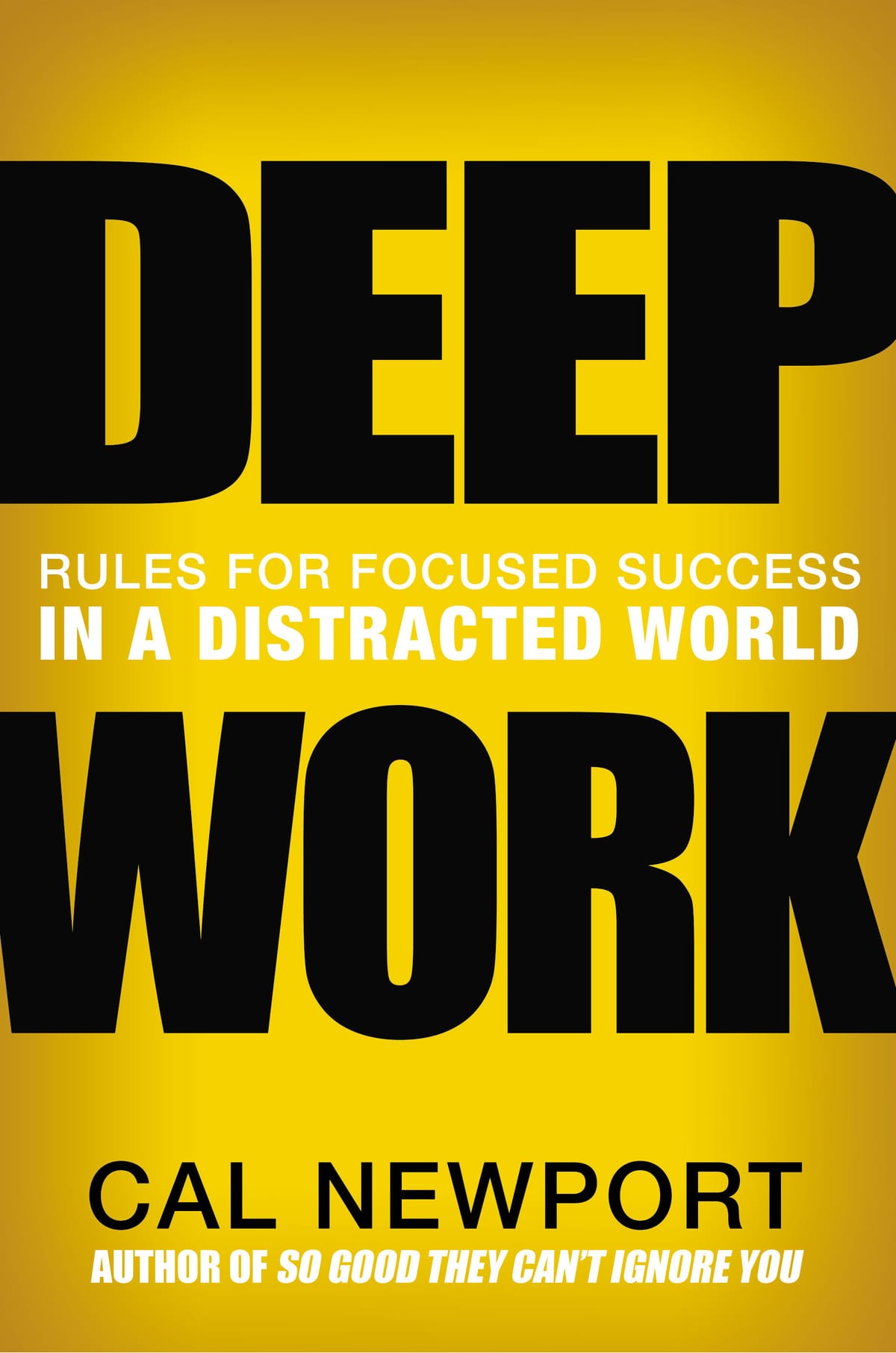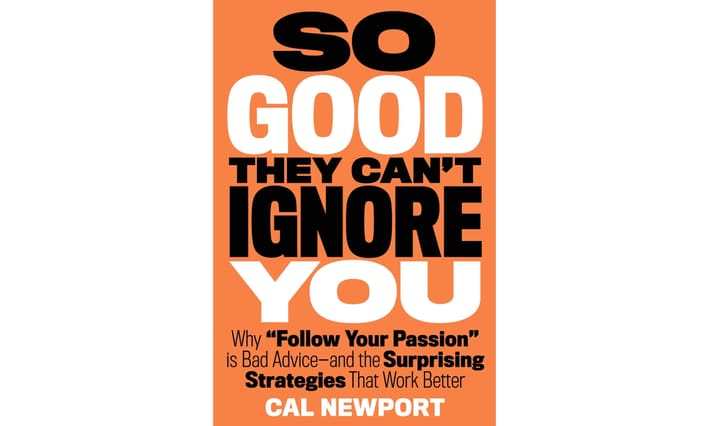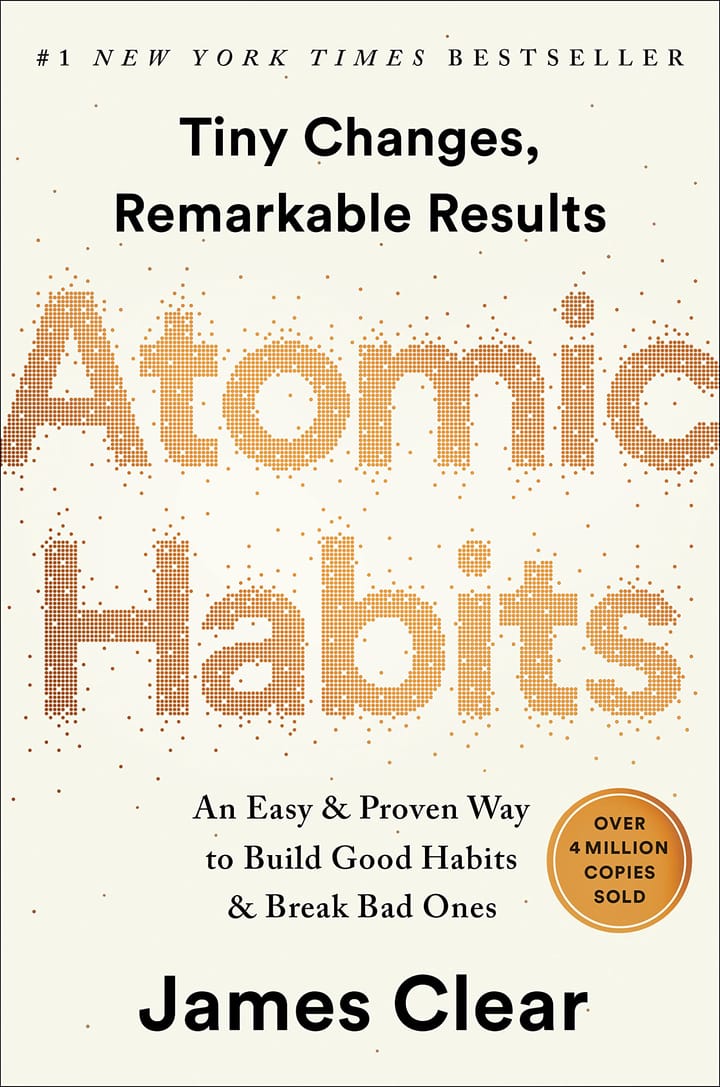Deep Work: Rules for Focused Success in a Distracted World

You can purchase the book here: Hardcover | Kindle | Audiobook
I absolutely love Cal Newport's podcast — I listen to it religiously. However, I feel that I didn’t need Part I of the book to understand that deep work is important. I’m already committed to the idea. I personally wanted more of Part II, which includes Newport’s tips on how to practically implement deep work into one's life.
Deep Work is divided into sections, which are short enough to read within 5-10 minutes. I really like this because it means that I can read a section in its entirety during my short study breaks. I would recommend this book (and podcast) to anyone wanting to work with more focus and attention, but could use some inspiration and/ or practical tips on how to implement deep work into their life. His other book, So Good They Can't Ignore You, is also on my list of books to read.
My Notes
Part I: The Idea
Chapter 1: Deep Work Is Valuable
Deep Work helps cultivate two abilities that are important for success in our new knowledge-based economy: (1) The ability to quickly master hard things; (2) The ability to produce at an elite level, in terms of both quality and speed.
Chapter 2: Deep Work Is Rare
As our society has become increasingly more connected through the internet, email, and social media, these same tools have led many of us to become less productive.
The Metric Black Hole represents the difficulty of accurately measuring the effect of nearly-constant connectedness on the bottom line.
Knowledge workers tend towards busyness as a way to project their value, since the output of their work is not always obvious.
Deep work should be a priority in today’s business climate. But it’s not. [Newport] summarized various explanations for this paradox. Among them are the realities that deep work is hard and shallow work is easier, that in the absence of clear goals for your job, the visible busyness that surrounds shallow work becomes self-preserving, and that our culture has developed a belief that if a behavior relates to “the internet,” then it’s good — regardless of its impact on our ability to produce valuable things.
Chapter 3: Deep Work Is Meaningful
Deep Work has intrinsic value.
Laura Carstensen’s experiment used fMRI to show that elderly subjects were subjectively happier because they learned to manage their attention by ignoring negative stimuli and savoring positive stimuli.
Mihaly Csikszentmihalyi and Reed Larson’s study used the experience sampling method (ESM) to show that people recorded feeling subjectively better when they were working on a difficult task that stretched the mind or body to its limits.
Part II: The Rules
Rule #1: Work Deeply
Choose a Deep Work Philosophy to schedule depth into your own life. Examples include:
- Monastic: The most radical of the philosophies offered by Newport. This philosophy attempts to maximize deep efforts by eliminating or radically minimizing shallow obligations year round. An example would be an accomplished author who lives in the woods without internet connection while he writes his next novel. He can only be reached via ground mail, which is sorted based on urgency by his assistant and delivered to him every few months or so.
- Bimodal: This philosophy divides your time into one part monastic-like deep work, and the other part for everything else. For example, Carl Jung would spend a few weeks working shallowly as a psychiatrist in clinical practice, and then spend the following few weeks secluded to his stone house in the woods to focus deeply on his theories.
- Rhythmic: Perhaps the most relatable philosophy, which suggests that you simply make a habit of working deeply every day. Although it doesn’t allow for the most intense stretches of deep work, like the Monastic or Bimodal Philosophies, it works best with the reality of human nature and is the easiest for the majority of us to integrate into our schedules.
- Journalistic: This philosophy is based on the journalist Walter Isaacson’s ability to suddenly pivot into short stretches of deep work whenever he found the time in his day. However, it’s worth mentioning that this approach is not for everyone, as casually transitioning from shallow to deep work is no small feat.
Make deep work a ritual. Work in the same places, at the same time, prepare your favorite cup of coffee, eat a healthy breakfast — do whatever you want to make it special, but do it every time.
Make grand gestures. If you spend an exorbitant amount of money on something related to the project at hand, then it encourages you to take it more seriously and work that much harder to complete it. An extreme example is Peter Shankman, a successful entrepreneur who boarded back-to-back flights from the USA to Japan to the USA again for the sole purpose of writing a manuscript, which he completed while in the air.
Treat Deep Work like a business with The 4 Disciplines of Execution (4DX):
- Focus on the Wildly Important (i.e. focus on the goal that requires deep work).
- Act on the Lead Measures (i.e. focus on time spent in a state of deep work dedicated toward your wildly important goal).
- Keep a Compelling Scoreboard (i.e. track the number of hours worked deeply).
- Create a Cadence of Accountability (ie. review the scoreboard on a regular basis and hold yourself accountable to being better).
Downtime from work is imperative. Give your conscious mind the space it needs to recover in order to allow your subconscious mind to mull over the same work in the background.
Reasons for scheduling downtime:
- Downtime aids insights.
- Downtime helps recharge the energy needed to work deeply.
- The work that evening downtime replaces is usually not that important.
Rule #2: Embrace Boredom
Schedule times to use your phone outside of deep work sessions. “Don’t take breaks from distraction. Instead take breaks from focus.”
Use the Roosevelt Dash: Work with blistering intensely on a project within tight constraints.
Practice Productive Meditation: Think deeply while doing other necessary tasks, such as showering, commuting, exercising, washing dishes, etc.
Through training your memorization skills (i.e. memorizing a shuffled deck of cards), you improve your ability to concentrate deeply on a task and work deeply.
Rule #3: Quit Social Media
Only adopt a tool (i.e. social media) if its positive impacts on your personal and/ or professional life far outweighs the negative.
When selecting tools, keep Pareto’s Principle in mind, which states that 80% of output comes from 20% of input. We might be using any number of different tools because they provide some value; but do they contribute to the 80%? If not, get rid of it and focus on the tools that do.
Try the Packing Party strategy coined by Ryan Nicodemus: Discontinue social media for 30 days as if you were going to get rid of it (but don’t formally delete it). Stop cold turkey and do not tell anyone what you’re doing. Then, at the end of 30 days, ask yourself:
- Would the last 30 days have been markedly better with social media?
- Did anyone care that I was absent?
Be intentional with your leisure time. If you spend 8 hours a day working, then that means 16 hours remain to do whatever you want. If you plan in advance what to do with your leisure time, then your days become more meaningful and fulfilling.
One of the chief things which my typical man has to learn is that the mental faculties are capable of a continuous hard activity; they do not tire like an arm or a leg. All they want is change, not rest — except in sleep. - Arnold Bennett
Rule #4: Drain The Shallows
Shallow work can sneak up on you and take up a surprising amount of time if left unchecked.
Studies show that people can rarely spend more than 4 hours a day deliberately focused on any task.
We naturally default to a mental auto-pilot mode when we don’t schedule our time, and, as a result, we are unable to accurately predict how much time we spend on tasks. If you don’t know how long things take, then how are you able to get more things done?
Use a time-blocking approach to scheduling. Practice predicting how long tasks will take. It’s OK if you have to readjust your schedule throughout the day.
Scheduling every minute of your day doesn’t mean that you have to live a rigid life. On the contrary, one can schedule their day with spontaneity in mind. For example, if you are a creator and you’re suddenly struck with a great idea, then you can ignore the remainder of your schedule to run with that idea — as long as the remainder of your schedule is not required.
Rank tasks based on the level of depth required to complete them and then schedule your time accordingly. This is not as trivial as it sounds.
By scheduling your day, you’ll quickly and easily be able to quantify how much work was spent in the deep versus the shallows. You can begin cutting the fat (shallow work) from your day-to-day schedule and make more time for the deep, meaningful work.
Use fixed-schedule productivity to restrict the times you work (e.g. 7 am to 5 pm). Then, work backwards from there and fill in your schedule in order to complete your work within those restraints. This is a paradoxical strategy to work less and yet still accomplish more.
Learn to say “no” more often. Protect your time.
Make yourself harder to contact. If there are less messages in your inbox, then you feel less obligation to spend time replying.
Use a process-centric approach to writing and responding to emails in order to decrease the number of future emails required to complete the task at hand. This requires some extra effort up front, however it greatly reduces the amount of time spent replying to future messages by closing the loop earlier. For example:
- Bad: “It was great to meet you last week. I’d love to follow up on some of those issues we discussed. Do you want to grab coffee?”
- Good: “I’d love to grab coffee. Let's meet at the Starbucks on campus. Below I listed two days next week when I’m free. For each day, I listed three times. If any of those day and time combinations work for you, let me know. I’ll consider your reply confirmation for the meeting. If none of those date and time combinations work, give me a call at the number below and we’ll hash out a time that works. Looking forward to it.”
Don’t respond to emails. Try not replying to email if (with few exceptions) :
- It’s ambiguous or otherwise makes it hard for you to generate a reasonable response.
- It’s not a question or proposal that interests you.
- Nothing really good would happen if you did respond, and nothing really bad would happen if you didn’t.




Comments ()